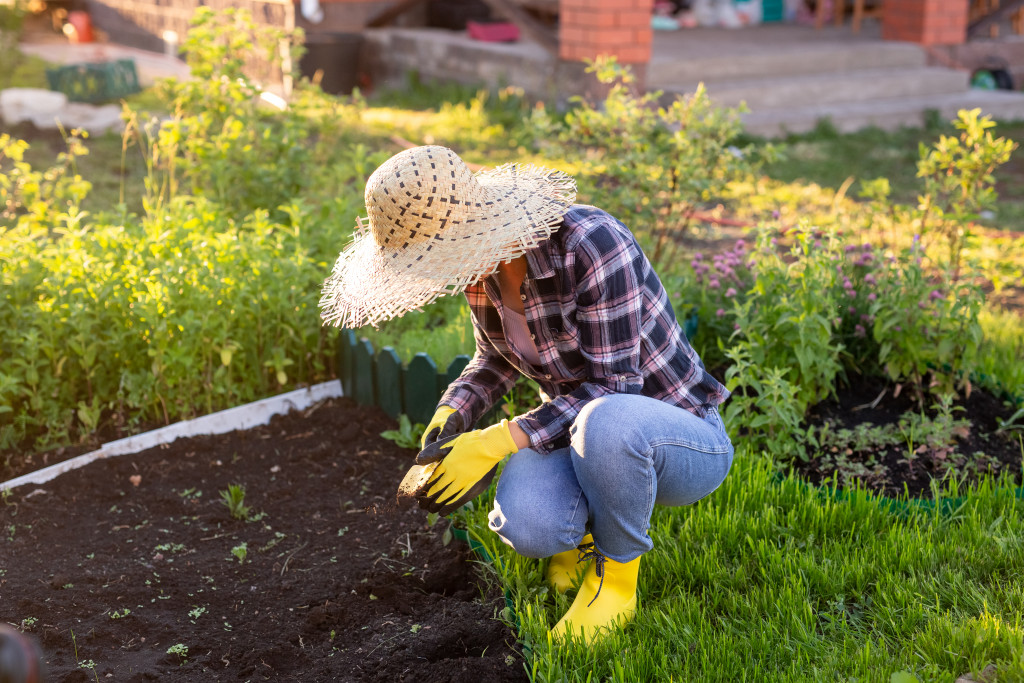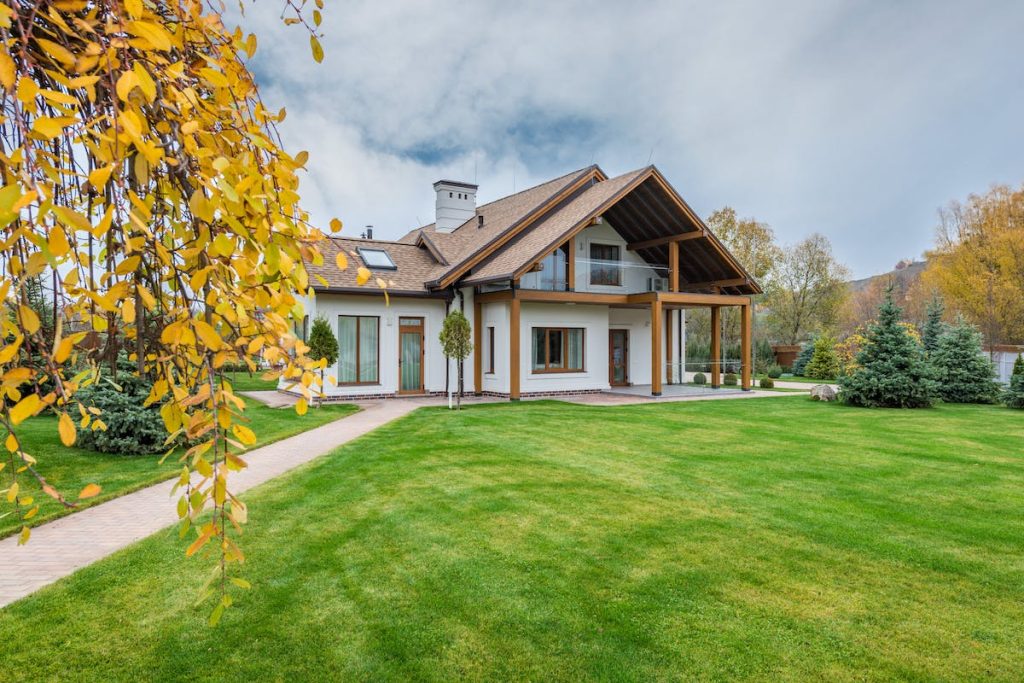- Hire an arborist to take care of your trees, as they play a crucial role in keeping the environment healthy
- Plant native flowers and plants that are adapted to your region’s climate and require less maintenance and water
- Install a rain barrel to collect and use rainwater for watering your plants, reducing your water bill and demand on municipal systems.
- Create a compost pile as an easy and sustainable way to reduce waste and provide natural fertilization for your backyard.
- Properly locate, layer, and maintain moisture, and regularly turn your compost pile using a pitchfork.
A healthy backyard is a beautiful sight to behold. It’s a wonderful place to unwind after a long day of work or to have fun with family and friends. But did you know that with a few tweaks here and there, you can quickly turn your backyard into a greener and healthier space? Here are some tips to help you make your backyard more eco-friendly and enjoyable for everyone.
Take care of your trees
If you have trees in your backyard, it’s essential to take proper care of them. Trees not only provide shade and beauty, but they also play a crucial role in keeping our environment healthy. To ensure that your trees are healthy and robust, it’s best to hire an arborist.
An arborist is a professional who specializes in the care of trees. They have the knowledge and skills to diagnose and treat any issues your trees may have adequately.
Plant native flowers and plants

One of the easiest ways to create a green and healthy backyard is by planting native flowers and plants. These are plants that are native to your region and are adapted to the local climate, making them less prone to disease and pests.
They also require less water and maintenance, and they support native pollinators like bees and butterflies. So, consider adding native flowers, shrubs, and trees to your backyard to create a beautiful and sustainable garden.
Install a rain barrel
Water is a precious resource, and we should all do our part to conserve it. Installing a rain barrel is an easy way to collect and store rainwater that you can use to water your plants. This helps to reduce your water bill and lessen the demand for municipal water systems. Plus, rainwater is naturally free of chemicals like chlorine and fluoride, making it better for your plants.
Use natural pest control methods
Using chemical pesticides in your backyard can be harmful to you and your pets, and it can also harm beneficial insects like bees and butterflies. Instead, opt for natural pest control methods like using companion planting, planting herbs that have insect-repellent properties, or using biological controls like ladybugs, nematodes, and praying mantises.
Create a compost pile
Composting is a simple solution to help you reduce your waste, and it’s great for your backyard, too. Not only is it an easy way to reduce waste, but it’s also a sustainable alternative to chemical fertilizers. Here’s how to create a compost pile:
Locate it correctly
Before creating a compost pile, it is crucial to select a suitable location. Your compost pile should be located in an area convenient for you but still meet specific criteria. It should be situated in a well-drained site with partial shade. A shady spot prevents the pile from drying out and keeps it moist. Also, it should be placed at least three feet away from building structures to avoid any potential odors.
Layer your materials
Composting requires a mix of “greens” and “browns.” Greens include grass clippings, food waste, and other fresh vegetation. Browns have dry leaves, cardboard, and newspaper. Begin your compost pile by layering two to three inches of browns and then adding a few inches of greens. Repeat this process until the bank is about four to five feet high. Do not pack down the layers.
Ensure proper moisture content
Maintaining the right level of moisture in your compost pile is crucial for the composting process. Your compost pile should be moist but not too wet or dry. You should be able to squeeze water from handfuls of material quickly. On rainy days, cover your pile with a tarp to prevent water from oversaturating the bank. On hot days, watering your bank may be necessary.
Turn regularly
Turning your compost pile is essential to ensure a uniform breakdown of materials. A well-maintained compost pile should be rotated every two to three weeks. Mixing the compost will speed up the process by aerating the pile and adding fresh oxygen. It also redistributes the materials that have broken down evenly throughout the bank. Always use a pitchfork when turning the pile.
Final Thoughts
With these tips and tricks, you can quickly turn your backyard into a beautiful and sustainable space that you can enjoy for years. By planting native plants, using natural pest control methods, composting, and using organic fertilizers, you can create a greener and healthier backyard that’s not only good for you but also good for the environment. So, get started today on your journey to a greener and more eco-friendly backyard!

